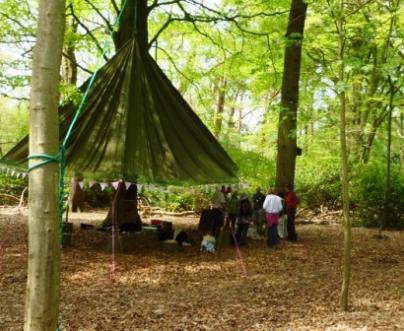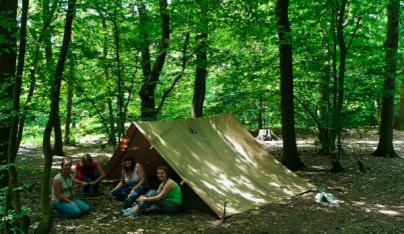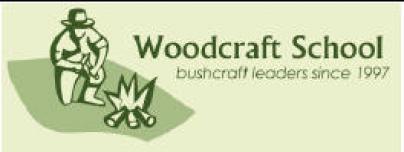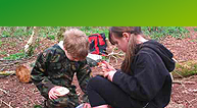Practical Skills - Resources, Handouts & Links
(Please note that we are still in the process of updating these pages)
All links to external website should open in a new window. Documents are either pdf or word and will open in an appropriate programme on your computer in a seperate window (you may have to exit your browser to see them). A box normally appears asking you permission to open or save the file. To read pdf files you will need adobe reader, which is free to download from the Adobe website here.
Health & Safety
For the definitive guidance on Health and Safety within the workplace please visit the Health and Safety Executive's website. We have put some direct links to documents/pages of particular interest:
HSE also issue specfic guidance to educational establishments regarding outdoor learning and offsite visits found on their Education pages here.
Risk Assessment & Risk Benefit
FSTC Handouts & Slideshow:
Appropriate Risk Taking -
Books
Last Child in the woods - by Richard Louv
Too safe for their own good - by Jenny Lindon
No Fear, Growing up in a risk averse society - by Tim Gill
Toxic Childhood - by Sue Palmer
A video explaining how to do a Risk Assessment using the HSE's 5 Steps to Risk Assessment process:
A video about how we consider risk as appropriate at Forest School:
Knots, Lashings & Cordage
There are many websites and books out there that can help you practice your knots!
Animated Knots by Grog (website) > - They also have a series of YouTube videos (see example one opposite)!
'Deck of Knots' by Des Pawson, published by DK (set of cards)
'The Ultimate Encyclopedia of Knots and Ropework' by Geoffrey Budworth, published by Southwater (book)
'Collin Gem - Knots' by Trevor Bounford, published by Collins (book)
FSTC Handouts:
Suppliers of Ropes & Cordage:
Lou may have some for sale during training
Storing Ropes - Coiling and Hanking
There are many different methods of coiling and chaining ropes, here is how Lou does it:
Links to other relevant documents/websites:
Childrens Rope Swings - A Guide to Good Practice (pdf) > - written by an organisation called 'Monkey-Do who specialise in temporary rope play structures.
Rope Swings, Dens, treehouses & Fires - A risk based approach for managers facilitating self-build play structures and activties in woodland settings (pdf) > - created by Forestry Commission to gve guidance to site managers about managing risk around play activities and structures.
Tool Use
The key thing with tool use is - practice practice practice! Only through physically using the tools to undertake different tasks, trying different techniques, and using them on different types of wood will you develop your skills and build on a range of experiences.
Remember that during your training you are welcome to attend the seasonal CPD workshops that Lou offers to your practice skills. Also many of the local Forest School Networks will have skill shares and CPD events.
Brands & Quality:
There is a huge varity of tool brands and designs. We would recommend investing in quality tools, which should last a lifetime (if well looked after!). We have provided some information about the tools and kit we use on the training course here: Tools and Kit webpage >
Here are some links to the websites of the tool brands we use (you can't purchase kit directly from them usually, but it gives you more information about the brand and their products):
Suppliers of Tools:
Guidance on Tool Use:
Forest School Leaders Guide - Knife Use with Groups by Liz Knowles (book)
Green Woodworking Links & Resources:
'The Encyclopedia of Green Woodworking' by Ray Tabor, published by Eco-Logic Books (Book)
'Living Wood - from buying a woodland to making a chair' by Mike Abbott, published by Living Woods Books (Book)
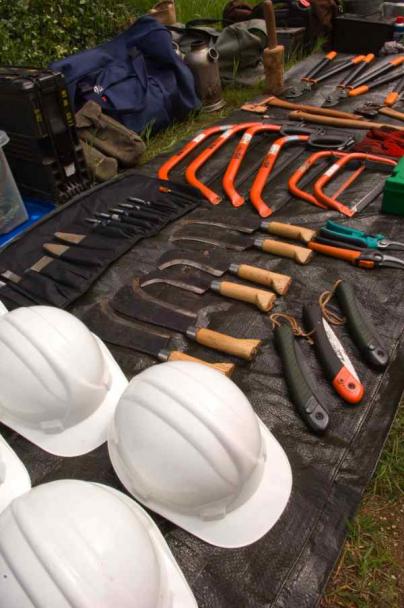
Knife Videos by Ben Orford:
Ben Orford (a well renown knife maker) has made some nice video tutorials on YouTube about knife techniques and knife sharpening. Please see the clips below:

Storm Kettles:
Please see below for a demo video from the Kelly Kettle Company (the company who originally created the storm kettle) of how to use a storm kettle. Remember to always take the cork out before heating the kettle!

Fire Lighting
Just as with tool use, the same goes with fire lighting - practice practice practice! Trying different techniques of lighting and laying your fire, using different species of firewood and different methods of campfire cooking will expand your range of skills.
Remember that during your training you are welcome to attend the seasonal CPD workshops that Lou offers to your practice skills. Also many of the local Forest School Networks will have skill shares and CPD events.
Here are some tips from Lou:
Brands:
Here are some links to the websites of the kit brands we use (you can't purchase kit directly from them usually, but it gives you more information about the brand and their products):
Suppliers of Fire Lighting/Campfire Cooking Kit:
FSTC shop - present on training from Module 2 onwards
Guidance on Fire Lighting:
Campfire Cooking:
Shelter Building
There are various different methods of making shelters - natural deadwod dens, longer lasting lashed structures and quick temporary structures made by rigging tarpaulins.
Remember that during your training you are welcome to attend the seasonal CPD workshops that Lou offers to your practice skills. Also many of the local Forest School Networks will have skill shares and CPD events.
Kit and Materials:
During the training we will have used a variety of different shelter building resources:
Woven polythene tarpaulins - cheap and easily available (from most DIY/garden/tool centres), however do not last long - as the eyelets tend to come out.
Nylon Bashas - available from most army surplus centers for about £30. Much stronger and robust as well as being lightweight and easy to handle.
Old Cargo Parachutes - available from some army surplus stores for between £35 - £55 (depending on size & condition)
We probably rigged them using 10-12mm polypropelene ropes as a ridgeline and used 550 paracord as guy lines.
Suppliers of Shelter Building Resources:
Guidance on Shelter Building:
'Bushcraft' by Ray Mears, published by Hodder & Stoughton Ltd (Book)
Continued Professional Development:
If you want to take your practical outdoor living skills further, you might like to consider going on some bushcraft training. We would personally recommend John Rhyder at Woodcraft School - he is amazing!
Broken links >
If you find any of the links to the documents above are not work properly, please let us know by typing in the name of the document in the form below.
Check out the other Student pages by clicking on the pictures:
You can also find useful information about Forest School Ethos and history and research on our main website:

